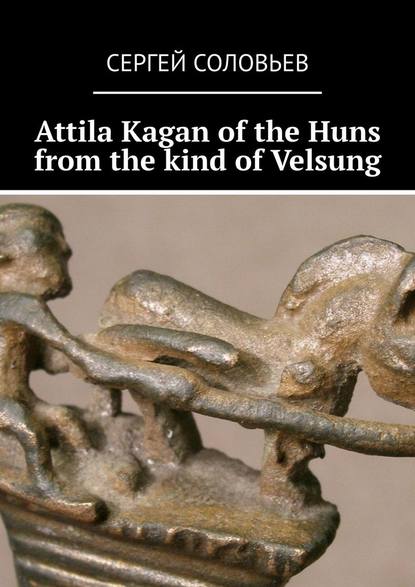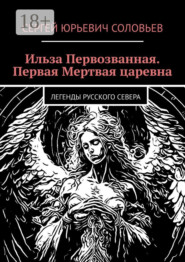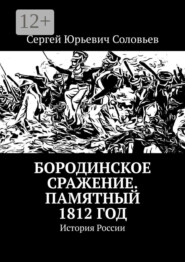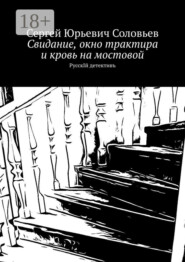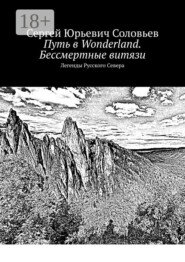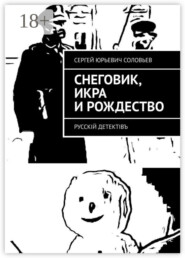По всем вопросам обращайтесь на: info@litportal.ru
(©) 2003-2024.
✖
Attila Kagan of the Huns from the kind of Velsung
Настройки чтения
Размер шрифта
Высота строк
Поля
Aridization (desiccation) of the climate at the end of the Bronze Age (11th – 8th centuries BC) led to the degradation and disappearance of the carcass culture.
Changing climatic conditions for dry and cool weather, together with total overpopulation, led to disastrous consequences. The population is sharply reduced, which according to archaeological data is recorded in a decrease in the number of settlements and their cultural transformation. Carriers of the carcass cultural and historical community took a direct part in the formation of the Belozersk and Bondarikha cultures of the final stage of the Bronze Age and had a noticeable effect on the population of the forest strip of Eastern Europe in the person of the Late Pinnacle and ordered cultures.
Pozdnyakovskaya culture, swastika pattern, SHM
Abashevskaya culture
By the middle of II millennium BC. e. In the forest-steppe zop of Eastern Europe, the Abashevsk cultural and historical community formed mainly of the cattle-breeding population, the monuments of which are now known on the territory from the left bank of the Dnieper in the west (the Desna and Seym basins) to the river. Tobol – in the east, and the chronological limits are determined by the second – third quarter of II millennium BC. e. The study of Abashev antiquities dates back more than 100 years (Pryakhin, 1981). Abashev culture itself was first isolated only after the excavation of prof. V.F.Smolin in 1925 of the Abashevsky burial ground in the territory of Chuvashia (Smolin, 1928; Smoline, 1927). Intensive studies of the Abashev burial grounds on the territory of the Chuvash Republic and the Mari ASSR in the post-war decades (Merpert, 1961; Halikov, Lebedinskaya, Gerasimova, 1966a) gradually outlined the idea of Abashev culture in the Middle Volga region and determined the comprehension of all Abashev antiquities (Yevtyukhov, 1964;. N., 1961; Halikov, 1966).
People of Abashevskaya culture are mainly engaged in cattle-breeding with subordinate importance of agriculture. The herd was dominated by cattle with a significant role of small cattle. The latter is especially characteristic for the early stage of development of this population and for those groups of Abashevists who continued to maintain a certain mobility at a later time. Separate groups in the late Abashev time show a tendency to the development of settled cattle-breeding and farming (the appearance of significant long-term villages, the presence of pig bones in these settlements, an increase in the number of evidence of farming, etc.) – a whole group of the late Abashev villages in the lower reaches of the river is especially indicative. Voronezh. There are horses in the herd of this population. In the more northern regions, on the territory of the modern Mari-Chuvash Volga region, the Abashev population was more mobile and, obviously, was more involved in pastoral cattle breeding. But I must say that in this region, and even now, people have always been engaged mainly in dairy cattle breeding, which did not make them nomads. In modern Finland, agriculture is also predominantly occupied by dairy farming, which does not make them nomads. The level of development of livestock breeding has led to wide opportunities for the use of livestock by Abashevites for transport and military purposes. The latter, in turn, not only contributed to their distribution over significant territories, but also was one of the conditions for the formation of a huge cultural and historical community. Here you need to understand the specifics of cow breeding and their needs, the abundance of water and grass, and in addition, the cow loves to sit in the water in the summer, escaping from gadfly. It was among the Abashevites, especially at the late stage of their development, that disc-shaped psalms with spikes became widespread, the most impressive are two ivory-ornamented psalms from the main burial of the mound 2 of the Old Yuryevsky burial ground in the Upper Don region. The finds of such psalms record the first appearance of chariot transport in the Eurasian steppe and forest-steppe (Pryakhin, 1972, p. 238; 1976 a, p. 124; Cherednichenko, 1976, p. 147 – 148; Smirnov, Kuzmina, 1977, p. 42 – 45,) The very fact of using disk-shaped psalies in the harness of chariots was undeniably confirmed during excavations of the Sintashta burial ground in the Trans-Urals, in the burials of which it was possible to trace the remains of such chariots themselves (Gening, 1977, p. 59, 66).
This population was the first in a sufficiently large volume to begin the development of the Ural copper deposits, especially the Trans-Ural copper deposits Tash-Kazgan and Nikolskoye, using the copper sandstones of the Urals, as well as the Volga region (Salnikov, 1962; Chernykh, 1964; 1970, p. 27 – 28, 108—111, etc.). Abashevsky masters developed their form of tools, weapons, and jewelry. The Abashevites are known for lamellar implements (knives, sickles, brackets) that have different functional purposes, their types of bent-axes: Kamsky, according to B. G. Tikhonov (Tikhonov, 1960, pp. 59—62), narrow-billed, according to E. N. Chernykh (Chernykh, 1970, p. 58, fig. 50), Abashevsky, according to S. A. Korenevsky (Korenevsky, 1973, p. 44—47, fig. 4), flat tesel axes, according to B. G. Tikhonov (Tikhonov, 1960, p. 66), type of elongated tesel axes with an expanded heel, according to E.N. Chernykh (Chernykh, 1970, p. 62), forged tip tips with an open sleeve, several varieties of knives and daggers, etc.. Abashevo masters produced petaloid plaques, rosettes, bracelets, which have not closed, often priostrennye ends, small grooved suspension and so on. D. For abashevtsev characteristic rich decoration of clothes, especially headgear, sewed small semicircular plaques wire pronizkami and other ornaments.
The very scale of development of the Abashev metallurgy is also determined by the findings of the series of the Abashev metal, considered in the literature under the concept of “treasure”, which geographically gravitate to deposits in the Urals and Trans-Urals (Krasnoyarsk, Verkhne-Kizylsky, near Dolgaya Gora, etc.). Their finds do not go to the right bank of the Volga. Moreover, some of the “treasures” are hardly left directly by the Abashev population.Some of them (Galich, Korshunovsky, Morozovsky) may indicate not so much the direct resettlement of the Abashevites in the forest regions of the Volga region, but rather the spread of the Abashev metal to the more northern territories. This population built at first large two-chamber or multi-chamber, having a gable roof, slightly deepened into the mainland dwellings, and then large in area, also slightly deepened into the mainland, but already single-chamber buildings with an adjoining vestibule.
An abyssal burial rite with the construction of flattened embankments is characteristic of the Abashev population. There is an interval between the time of the burial and the construction of the embankment. A feature of the funeral rite of this population was the construction of ring (less often rectangular) extra-grave structures that limit a significant area around one or more graves. The presence of independent rectangular pillar structures around individual graves is sometimes noted. The funeral rite of the Abashev population is characterized by a varying degree of the cult of fire (burning of ground constructions, pouring of burning coal into the grave, etc.) and animal sacrifice (the position of parts or skins with head and legs). Grave pits are most often elongated-rectangular, sometimes have a wooden or stone decoration. The dead were laid on their backs with their legs extended or raised. The eastern and southeastern orientations of the dead are more common. The presence of dissected, partial, i.e., repeated burials, is noted. Finally, the complete absence of bones in a number of grave pits testifies to cenotaphs, which confirms the presence of some complex, yet incomprehensible funeral traditions among the Abashevites, which also brings them closer to the Hellenic tradition. Single burials are common. But in the outlying regions, especially in the zones of contacts with foreign cultural tribes, collective burials such as mass graves are frequent: Pepkinsky and Staro-Ardatovsky mounds in the Middle Volga region, I Yukalekulevsky mound in Bashkiria. For barrows, stone extra-grave structures not characteristic of other Abashev cultures are most characteristic. Only here the stone was widely used in the design of grave pits. In some cases, powerful bonfires were noted that burned over the grave pits after the burial. More often than in other territories, the presence of partial and repeated burials is recorded. The dead were laid on their backs elongated or with raised legs. There is no stability in the orientation of the dead.
Among the forms of ceramics, there are more bell-shaped bowls and fewer bell-shaped pots. Bell-shaped vessels here often have a significantly lower corolla height. Images of a meander and a swastika appear on the vessels. Dishes are also blackened or ground, traditional for Indo-Europeans.
Vessel from the State Historical Museum, Abashevskaya culture. Meander.
Temporal lobed rings
Differences are manifested even in small pointed rib vessels – the presence of a direct fall in the neck region from the inside is especially significant. In the decoration of vessels, meander and lobed patterns are much more often noted, the tradition of decorating their lower part with a drawn vertical herringbone, etc. In the Ural territory, rounded bracelets with non-closed blunt ends, metal overlays, plate plaques are common. The bracelets are spiral, and also from the time of the catacomb culture, temporal lobed rings have been used.
Only here, multi-turn small grooved pendants and metal beads are known. A significant set of metal tools and weapons. The outlined solution to the question of the origin and future fate of the Abashev population is also responsible for the approach to elucidating the ethnic group of this population. The denial of the genetic connection with the Abashevites of the preceding cultures of the Volga forest, as well as the lack of direct inheritance of the Abashev traits by the Finno-Ugric cultures of the early Iron Age of the Volga region, is a serious argument in favor of the denial of the Finno-Ugric ethnic group of the Abashevites. At the same time, the definition of their ethnic group as Indo-Iranian is becoming more and more obvious (for the first time such a point of view was expressed by A. Kh. Khalikov). This interpretation of the ethnic group of the Abashevites receives additional arguments in connection with new arguments in favor of the fact that the Abashevites, with their historical roots, development and further fate, are connected with the world of the masses of the population of the ancient, Srubnaya and Alakul cultural and historical communities, which are now more and more definitely viewed directly connection with the problem of the early history of the Indo-Europeans, and then their group of Indo-Iranian branches.
Andronovo culture
Andronovo culture (cultural-historical community) – the general name of a group of close archaeological cultures of the Bronze Age, covering in the XVII – IX centuries BC. e. Kazakhstan, Western Siberia, the western part of Central Asia, the South Urals, as well as Northwest China, Gansu province (article Bechter A.V., Khavrin S.V. Steppe bronzes from Gansu and Xinjiang Uygur Autonomous Region of China and problems east line synchronization). People of this culture were called, already Huns or Hans, from a totem or a farna, a sacred animal, a gesya-swan. And from here came the name of the Gansi province. Here it is also necessary to recall the discovery of the Tarim mummies belonging to the Andronovo culture, according to the monuments of ceramics. A Swedish archaeologist excavated in 1939. there are almost a dozen mummies and about 200 artifacts. Bergman left a detailed description of his findings in a work entitled “Archaeological Researches in Sinkiang Especially the Lop-nor Region”. By the early 1990s, more than a thousand Nordic mummies had already been discovered in the Chinese province of Wapu, but in 1998 the Chinese government banned further excavations, apparently because of fears that even more striking evidence would be extracted the presence of Caucasians in ancient China. So the researchers in 1980 deep under the “sea of death” found the mummy of a beautiful girl, nicknamed the sleeping beauty Lulan. According to scientists, the remains of 3800 years. One of the famous Tocharian mummies, known as the “beautiful Loulan” and reconstruction. It belongs to a young Caucasian woman (high height 180 cm and strands of blond hair) and was found in 1980 in the vicinity of Loulan. Approximate age 3800 years. And what’s important, the extremely high growth of the dead men is 200cm tall, women 180cm tall.
In China, obviously, people of Andronovo culture founded the state of Shang-Yin, here are very interesting preliers in the manufacture of bronze cauldrons of shan-yin and later Sarmatians and Huns. Another interesting find of the Sejm-Turbino era is the scraper knife, in which the handle is parallel to the blade, that is, the blade is inserted into the bone handle with a side edge. The knife was discovered at the Weijiatai Monument, Linxia County, Gansu Province (Tian Souther, 1983, p. 76, Debaine-Francfort 1995, fig. 49.8) The name of the whole culture comes from the village of Andronovo near the city of Achinsk, where in August 1914 A. Ya. Tugarinov discovered the first burial place.
The formation and formation of the Andronovo cultural and historical community took place over several centuries, starting from the turn of the 3rd – 2nd millennium BC. e. Andronovo culture as a single community took shape on the territory of Kazakhstan in the 16th – 15th centuries. BC e.
Within this unity, Alakul and Fedorov cultures are formed. Alakulskaya spread in Central and Western Kazakhstan, and Fedorovskaya – in the territory of East Kazakhstan. In Central Kazakhstan and in Semirechye, signs of both cultures are found simultaneously. Subsequently, tribes from Kazakhstan migrated east and south, up to Iran. M.P. Gryaznov singled out the materials of the burial grounds he studied in the river basin. The Urals is the western version of the Andronovo culture which dated to the XIV – XI centuries. BC e. Andronovo culture was highlighted by the Soviet archaeologist S. A. Teploukhov in 1927. Research was also carried out by archaeologist K.V. Salnikov, who in 1948 proposed the first classification of monuments of Andronovo culture. He distinguished three chronological stages: Fedorovsky, Alakulsky and Zamaraevsky.
Seima-Turbino culture, State Historical Museum
Currently, at least four related cultures are distinguished in the Andronovo culture:
Sintashta-Petrovka-Arkaim (Southern Urals, northern Kazakhstan, 2200—1600 BC,
– This is the fortification of Sintasht in the Chelyabinsk region, dating from 1800 BC. e.,
– Settlement Arkaim, also in the Chelyabinsk region, dating from 1700 BC. e.;
– Alakul (2100—1400 BC), in the area between the Amu Darya and Syr Darya rivers, the Kyzylkum desert;
– Alekseevka (1300—1100 BC) in eastern Kazakhstan, the influence of Namazg-Tepe VI in Turkmenistan
– Ingalskaya valley in the south of the Tyumen region, in which the monuments of Alakul, Fedorov and Sargat cultures successively replace each other
– Fyodorovo (1500—1300 BC) in southern Siberia (cremation and the cult of fire were first encountered);
– Beshkent district – Vakhsh (Tajikistan), 1000—800 BC. e. The spread of Andronovo culture was uneven. In the west, it reached the region of the Urals and the Volga, where it was in contact with the carcass culture. In the east, Andronov’s culture spread to the Minusinsk depression, partially including the territory of the early Afanasyev culture. In the south, separate material monuments were discovered in the area of the mountain systems of Kopetdag (Turkmenistan), Pamir (Tajikistan) and the Tien Shan (Kyrgyzstan), in the area of settlement of Dravidian-speaking tribes. Considering the problems of the history of Andronovo cultural unity in metal products, N.A. Avanesova proposed the following periodization scheme: 1) the pre-Lakul stage (XVII – XVI centuries BC); 2) Andronovo culture (XVI – XII centuries BC);
– Alakul stage (XV – XIV centuries BC);
– Kozhumberdinsky stage (XIV century. BC);
– Fedorovsky stage (XIV – XIII centuries. BC);
– Zamaraevo-Begazinskaya culture (XII – IX centuries. BC. E.) (1979, p. 20—21).
In the late 70’s. OH. Margulan, without changing the sequence of genetic continuity in the development of the tribes of Central Kazakhstan, proposed a new chronological framework for the stages, extending the Nurin stage (synchronous to Fedorov) from the end of III to the beginning of II millennium BC. e., almost 5 centuries; Atasu (synchronous to Alakul) until the 18th century BC e., i.e. for 4 centuries, and the transition period to the Late Bronze Age to the XIII century. BC e., i.e. for one century, leaving the dating of the Begazy-Dandybaev culture as early as the 10th-8th centuries unchanged. BC e.
The northern border of the spread of Andronovo culture coincides with the border of the taiga. In the Volga basin, a noticeable influence of the logging culture is felt. Pottery of the Fedorovo type was discovered in the Volgograd region. The issues of chronology and cultural affiliation of the late bronze monuments of Northern Kazakhstan were developed by S. Ya. Zdanovich, who singled out the Sargarine culture of the final stage of the Bronze Age, dating it to the X – VIII or even IX – VIII centuries. BC e.
Sintashta, bracelet with volute.
In the Siberian steppes, a common economic and cultural type of shepherds and pastoralists and farmers developed for all Andronovites; Andronovtsy settled down in long-term semi-dugouts. Their villages were located in river valleys rich in pastures and fertile land suitable for agriculture. The herd was dominated by cattle, sheep, horses. Andronovites became the first riders in the Asian steppes. Cattle were kept on pastures for most of the year under the supervision of shepherds, and in winter – in special pens. Cereals were cultivated on lungs to cultivate floodplain lands. The soil was manually cultivated with stone and bronze hoes. Hunting and fishing were not of great importance in economic life. They lived poorly, settled in large families in dugouts, located quite far from each other; many times they created settlements, but chaotic, spontaneous, without a clear plan. Settlements in the form of 10 to 20 large dwellings.
Chariot on the blackened vessel, SHM
The dwellings were semi-dugouts and ground log cabins. Some settlements (for example, settlements in the Petrovka and Bogolyubovo regions) were surrounded by moats and ramparts, the land for which was taken during a fragment of the moat. A wooden picket fence was built on top of the shafts. For passage inside, jumpers were left in the ditch, and gates were arranged in the shaft for the passage of chariots.
Andronovtsy were tribes of metallurgists. They owned copper and tin mines and delivered metal far to the west. Their casters provided a wide production of tools (sickles, axes, Celts) and weapons (daggers, bushings, spears with a leaf-shaped pen), including outside the Andronovo range. Copper ore deposits were developed in Kazakhstan, as well as in the Altai Mountains. Burials were made in pits with stone embankments, sometimes surrounded by fences made of stone slabs. Burials using wooden cladding are encountered. The dead were laid in a crouched position, hands were laid in front of the face. In the burials find flint arrowheads, bronze tools and weapons, jewelry, ceramics. The deceased was sometimes burned. Vessels with a flat bottom were decorated at the top and at the very bottom with impressions of a thin comb stamp or carved lines, often in the form of a variety of geometric shapes – meanders, triangles, crosses, swastikas and meanders. Of the ornaments, again, spiral bracelets, temporal lobed rings, open bracelets with a volute, figure below.
Weapons, decorations
The horse was a consuming and important character among the ornaments characteristic of bronze combat knives. A stocky horse with a thick mane, a large head and sensitively guarded ears froze on the top of a crooked knife. The short man gripped the reins tightly and glides on widely spaced skis. This, already famous, sculptural group from the Rostovka burial ground points to one of the oldest ways to move a person in tow after a fast-jumping animal.
Figurine, man rides a horse on skis
Genetic studies of Andronov’s remains showed that the culture representatives had the Y chromosome haplogroup R1a1, R1b M73, Q1a and the Y chromosome haplogroup C (prd M48) and mitochondrial haplogroups U, Z, T, H, K, and HV. In one study of 2015, the Y chromosome haplogroup R1a1a1b2a2-Z2124 and mitochondrial haplogroups U2 were found, in another study of 2015, a mitochondrial haplogroup A10 * was found in a representative of the Fedorov culture (Tartas-1). The closest to Andronovites were representatives of the European culture of cord ceramics and Sintashta culture, as well as modern Indian populations, according to a study by Keyser C. et al. “Ancient DNA provides new insights into the history of south Siberian Kurgan people.”
What did all these peoples call themselves? I would venture to suggest that the Huns or Ghans, or rather, the Hans, and this is confirmed by the myth of Hannimed of Asia Minor. King Guney of Thessaly, as well as the names of the barrows in Russia and Germany, and in Russia, this literally means “KUR-GAN” – “possession of the Gans”, hens – possession, the cossack’s hens, and the name of the city of Kursk. And in Germany there are also such “Hünegrab” – “grave of the hun (giant)” and “Hünebett” – “the bed of the hun (giant)”. In Dutch also – Hunebed – a giant’s bed. It is very likely that it was at this time, and these peoples. Judging by the legends of the Narts and the legends of the Egyptians, the Huns-Hans were mysterious Hyksos-shepherd kings, because the cities founded by these tribes in the Nile Delta were given names in honor of the distant ancestral home – Tanais (Tanis) and Avaris, and here on the historical stage go Avars Avars, who became the ancestors of the current Avars.
Cimmerians and Scythians
Cimmerians
Next comes the time of the Cimmerians, the predecessors of the Scythians. Although judging by the images of this people by the Greeks, they are indistinguishable from each other. Cimmerians (Akkad. Gimirāia, other Greek Κιμμέριοι) are nomadic tribes that invaded Transcaucasia in the second half of the VIII century BC. e. and in the 7th century BC e. conquered some areas of Asia Minor. Also the conditional name of the so-called “pre-Scythian” peoples of the Northern Black Sea region of the Iron Age. Gimirra from Assyrian sources can be identical to the Cimmerians of ancient authors, driven out from the steppes to the Middle East by the advance of the Scythians. By the way, now there is the city of Gyumri in the Caucasus in Armenia, and the city of Kimry in Russia, and the village of Gimry in Dagestan. The period of existence of the ethno-cultural community of the Cimmerians fell on the 1st half of the 1st millennium BC. e., according to ancient narrative sources and modern archaeological data, the traces of the Cimmerians are fairly reliably traced in the VIII – VII centuries BC. e. The region of residence of the Cimmerians is the Northern and Eastern Black Sea (Crimea, Priazovye, Taman, the western Ciscaucasia and the Caucasus); there is also information about the penetration of the Cimmerians into western Transcaucasia and Asia Minor.
In the 1st millennium BC. e. on the territory of Eurasia, an important historical era has come – the end of the Bronze Age and the beginning of the Iron Age. Written testimonies of the Cimmerians were preserved among the peoples who had written language who directly came into contact with them: in the chronicles of the Assyrians, in the Urartian and Biblical texts, in ancient authors.
Data on the language of the Cimmerians is limited to the tribal name itself and 3 names of their leaders; Iranian etymologies were proposed for all these words, not one of which is indisputable. Given the cultural affinity of the Cimmerians and Scythians according to written sources and archeological data, it is usually assumed that their languages belong to the Iranian language group, although rather to the Indo-Aryan. One of the first mentions of the Cimmerians is known from the ancient Greek Odyssey, probably created in the VIII century BC. In a poem traditionally attributed to the legendary Homer, the Cimmerians (dr. Greek Κιμμέριοι, Kimmerioi) and their lands are characterized in the light of mythological representations of the Hellenes and are localized in the Far West near the world river Ocean, where the rays of the sun-Helios never penetrate. The Cimmerians are mentioned in the poem only once in the eleventh song (“Victims for Calling the Dead” / “Summoning Shadows”).Translation options with this passage (lines 13—19):





